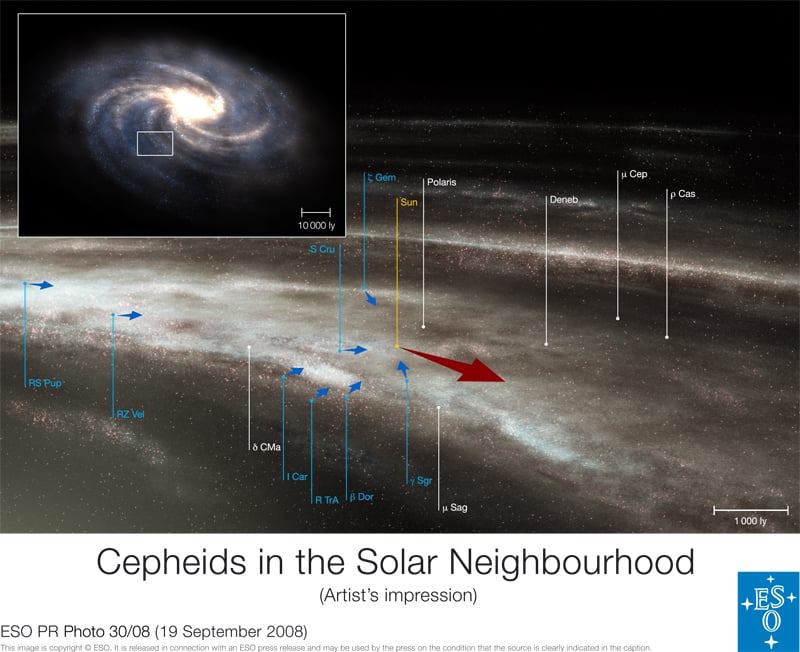Cepheid variable stars have been used for years as a way to determine distance to other galaxies. The correlation between their period of variability and absolute luminosity provides a cosmic yardstick to measure distances out to a few tens of millions of light-years. Additionally, Cepheids closer to home are used as tools to investigate how the Milky Way spins. But the motion of the Cepheids in our galaxy has confused astronomers, as these neighborhood Cepheids appear to fall towards the sun. A debate has raged for decades as to whether this phenomenon was truly related to the actual motion of the Cepheids and, consequently, to a complicated rotating pattern of our galaxy, or if it was the result of effects within the atmospheres of the Cepheids. But new observations with the HARPS (High Accuracy Radio Velocity Planet Searcher) spectograph shows that the Cepheids aren't falling, and that the much debated, apparent 'fall' does in fact stem from properties of the atmospheres around these variable stars.
"The motion of Milky Way Cepheids is confusing and has led to disagreement among researchers," says astrophysicist Nicolas Nardetto. "If the rotation of the Galaxy is taken into account, the Cepheids appear to 'fall' towards the Sun with a mean velocity of about 2 km/s."
Nardetto and his colleagues observed eight Cepheids with the high precision HARPS spectrograph, attached to the 3.6-m ESO telescope at La Silla, 2400 m up in the mountains of the Chilean Atacama Desert. HARPS, or the High Accuracy Radial Velocity Planetary Searcher, is best known as a very successful planet hunter, but it can also be used to resolve other complicated cases, where its ability to determine radial velocities - the speed with which something is moving towards or away from us - with phenomenally high accuracy is invaluable. "Our observations show that this apparent motion towards us almost certainly stems from an intrinsic property of Cepheids," says Nardetto.
The astronomers found that the deviations in the measured velocity of Cepheids were linked to the chemical elements in the atmospheres of the Cepheids considered. "This result, if generalized to all Cepheids, implies that the rotation of the Milky Way is simpler than previously thought, and is certainly symmetrical about an axis," concludes Nardetto.
Source:
ESO
 Universe Today
Universe Today
